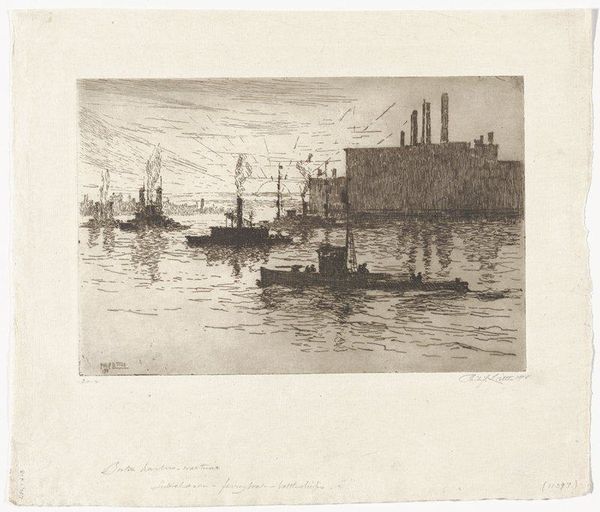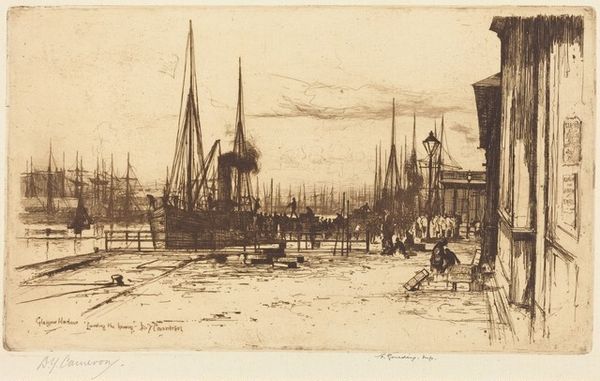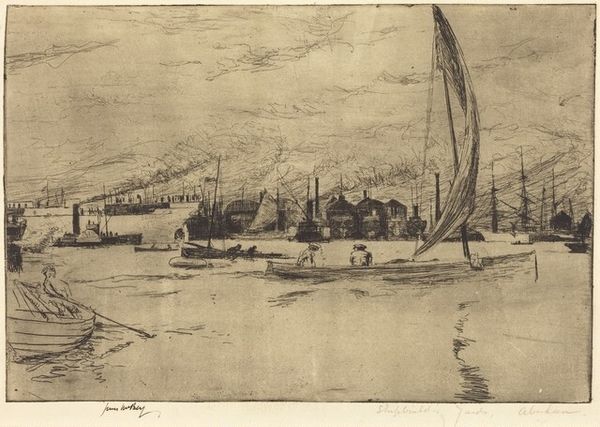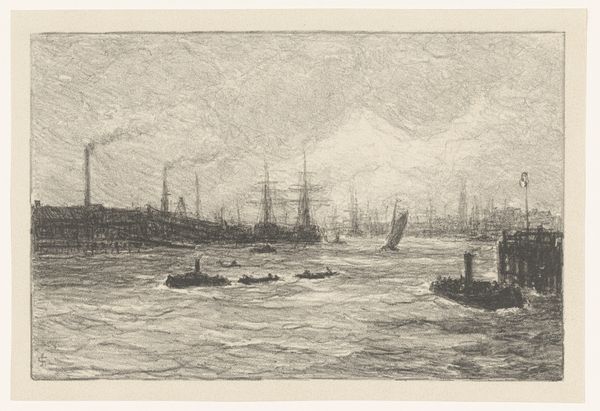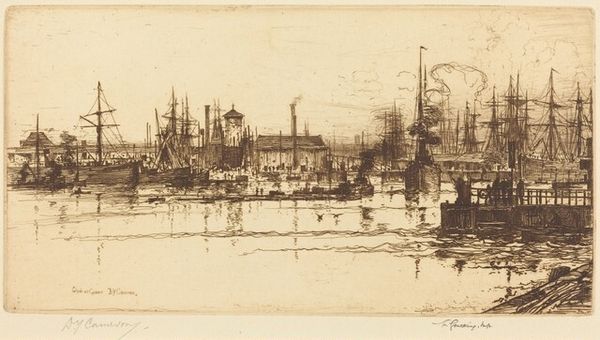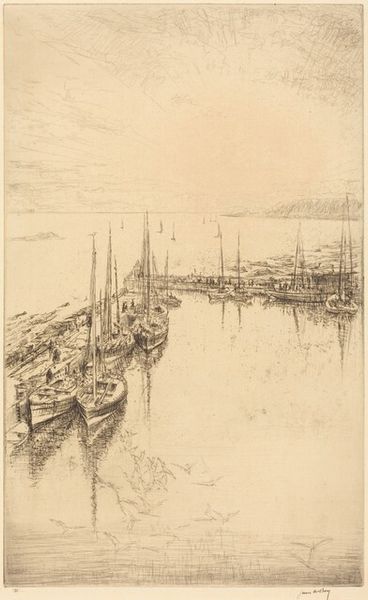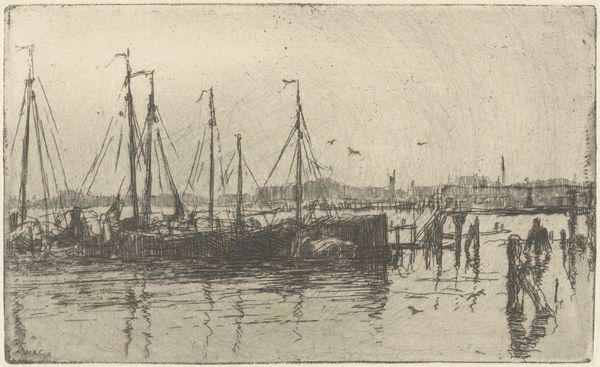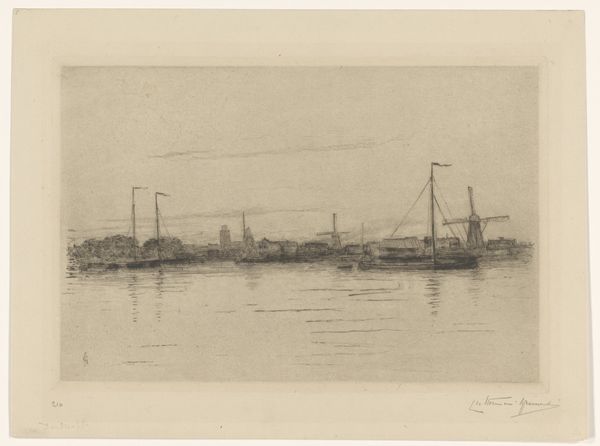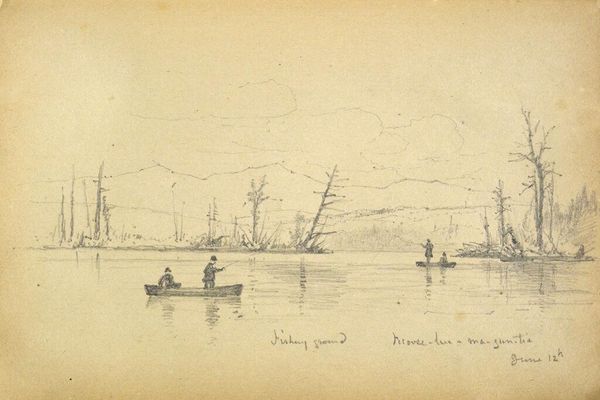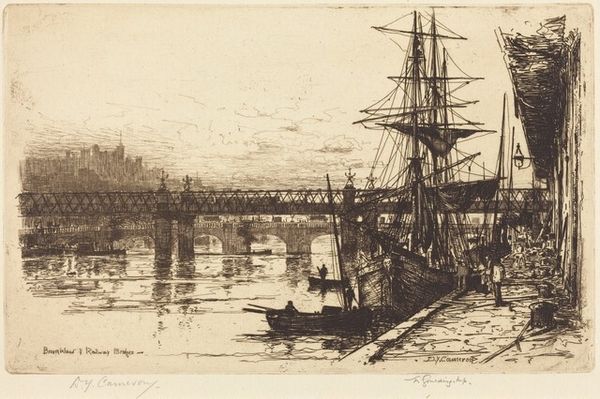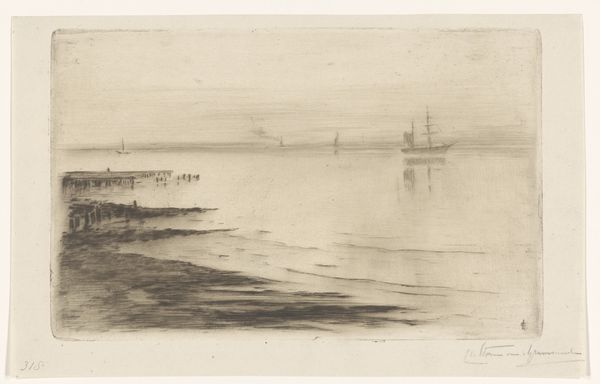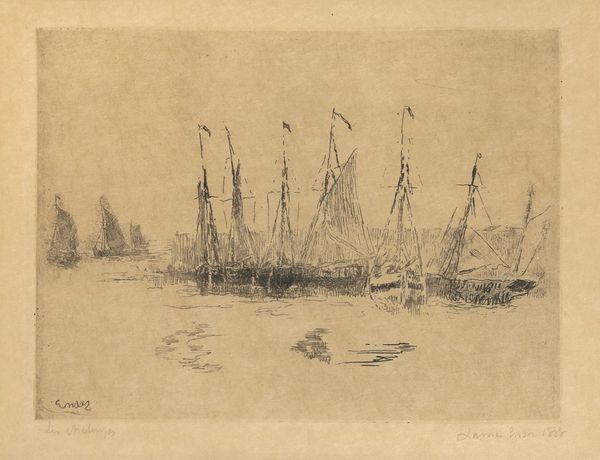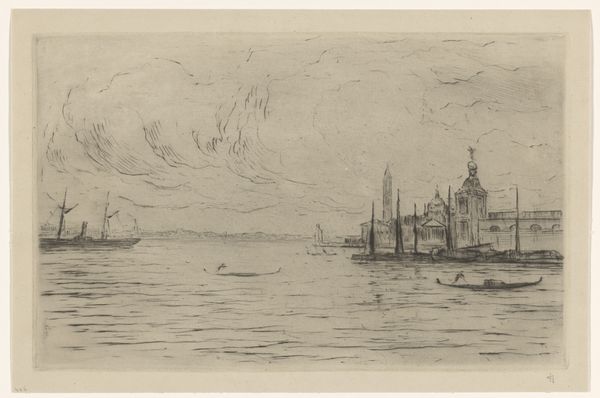
print, etching
# print
#
impressionism
#
etching
#
landscape
#
etching
#
cityscape
Copyright: National Gallery of Art: CC0 1.0
Editor: This is David Young Cameron's "Loch Ranza," created in 1889 using etching. The scene depicts a harbor with many sailing masts, but what really struck me is the artist’s technique; the etching feels very detailed yet also gives the impression of fog or maybe rain. What catches your eye in this work? Curator: I notice immediately the emphasis on the materiality of the printmaking process. Consider the copper plate, the acid, the intense labor required to create this image. We are presented with the product of a specific mode of industrial and artistic production in the late 19th century. Does that intricate detailing you see belie the emerging industrial fishing industry of the time, dependent on such harbours? What might this scene suggest about Scotland's relationship to the sea, to labour? Editor: That's interesting! I hadn't considered the etching itself as a product of labor. So you're saying the image, while seemingly just a pretty harbor scene, is deeply tied to the social and economic context of the time? The technique itself speaks volumes. Curator: Precisely! The consumption of images like these also plays a role. Were these prints meant for mass distribution or a more limited, elite audience? Exploring these avenues can tell us a lot about the work's place in society. Think about who was buying art like this and why. How does it shape our view of landscape and labor today? Editor: That makes me see it in a completely new light. It's no longer just a landscape, but a record of production, consumption and labor of a specific era. Curator: Indeed. We began by considering the artistic labour to create the image. I hope we now have more clues about other types of labour that have shaped that beautiful scene, and continue to shape our engagement with the natural world.
Comments
No comments
Be the first to comment and join the conversation on the ultimate creative platform.
